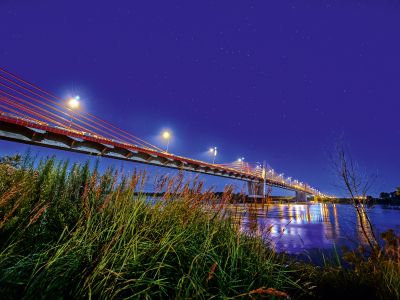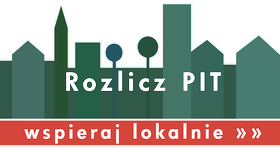Miasto i Gmina Gniew
Menu witryny
Treść strony
Opalenie
Opalenie is a large village located among old forests. The first historical mention about it comes from 1365 (then the village was called Opalin), however, the archaeological discoveries prove that this land was inhabited by people around 1500 before Christ.
In the XVIII century, the village, farm and Vistula meadows belonged to the family of Czapski. Piotr Czapski founded the Opalin Academy, which activity was reactivated in 1999. His son, Jakub Czapski, Pomeranian ensign and the treasurer of Royal Prussia, in 1773 founded the church existing to this day, of Saints Peter and Paul, the Apostles. It is a single-nave temple with side chapels, of the baroque décor. Inside there is a medieval granite stoup with the portrait of its founder located in the porch.
On the initiative of Jabub Czapski, also the brick, storey palace has been built. It is surrounded by a beautiful park with a pond. The building was built on the foundations of the XVII-century Baroque mansion, from which the basements and the underground corridors leading into different directions have survived until this day. According to the entries, in 1812 Napoleon Bonaparte spent the night there, who was leaving for a trip to Russia. Today the building houses the centre of drug treatment.
The first field association of the Nature Protection League in Poland was founded in 1924 in Opalenie.
While in Opalenie, it is worth staying in the agro-tourism housings located among the forests. You can choose from a variety of attractions, which are offered by the hosts to the visitors – horseback riding, carriage rides, and in winter, sleigh with torches and warming beverages.
The village is surrounded by old extensive forests, including the floral nature reserved created in 1965. Moreover, the nearby forest village of Pólko houses the forester and the Chamber of Environmental Education. Also three hiking trails cross here.
In 2013 the bridge was opened through the Vistula, connecting Opalenie with the nearby Kwidzyn. It is one of the longest bridges of the extradosed type in the world and the longest one in Europe. This structure is an example of the application of modern technology and road infrastructure, in harmony incorporated into the protected areas of Natura 2000. The previous bridge built by the Germans in 1905–1909, was dismantled in 1928-1929 and due to the great crisis, it was re-made in 1934 in Torun.
Polecamy
Dofinansowanie
Strona sfinansowana została ze środków Ministerstwa Administracji i Cyfryzacji, w ramach konkursu na budowę strony internetowej oraz dostosowanie jej do potrzeb osób niepełnosprawnych.
Kontakt

Urząd Miasta i Gminy Gniew
Plac Grunwaldzki 1, 83-140 Gniew
pon., wt., czw. 7.30-15.30
śr. 7.30-17.00
pt. 7.30-14.00
tel. 58 530 79 19;
fax 58 530 79 40
e-mail: sekretariat@gniew.pl
DANE DO FAKTURY
Gmina Gniew
NIP 593 10 05 516
REGON 191675296
Adres Elektronicznej Skrzynki Podawczej: /34gu04waml/skrytka






























